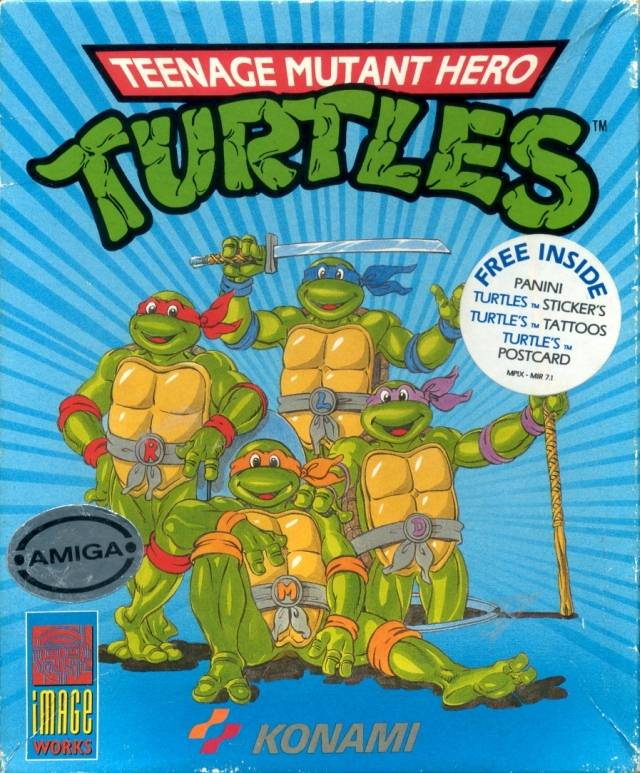Ninjas Need Not Apply

The Teenage Mutant Ninja Turtles — TMNT, to fans around the world — stormed into the world of afterschool TV cartoons in late 1987, three years after debuting as a successful comic book series. The TV series featured four turtles transformed by a mysterious ooze into humanoid teens seen above. There was Leonardo, the katana-wielding leader of the quartet, in blue; Rafael, the sarcastic, sai-armed red turtle; Michelangelo, the sophomore orange turtle skilled with nunchakus; and the bo-using Donatello, in purple, who could invent impossible creations with seemingly substandard parts. They were trained in the ninja arts by their master, Splinter (originally Hamato Yoshi), an expert in the field who had been mutated into a rat-man by the very same ooze. And more importantly to those of us in the real world, the TMNT was a very successful brand, with a ten-season TV run totaling nearly 200 episodes. This led to licensed toys, video games (as seen above), and even a line of food items. Ninja madness had swept over the world.
Almost. Because in some areas, ninjas weren’t appreciated.
If you look carefully at the video game cover, above, you’ll notice that the Teenage Mutant Ninja Turtles aren’t Ninja Turtles at all — they’re Hero Turtles. That’s because for a short time during the Turtles’ height of popularity, the United Kingdom and Ireland weren’t so fond of ninjas, especially when it came to content for kids. Ninjas were seen as being “excessively violent” and unsuitable for young audiences. So to work around this, the producers cut a logo and theme song. The logo, seen above, is self-explanatory. The theme song (listen here) swapped out the word “Ninjas” for “Heroes” as well and changed another reference from “ninja teens” to “fighting teens.” (And, for good measure, “that’s a fact, jack!” was changed to the markedly more British “that’s a fact, chap!” — because if you’re going to edit the audio, why not make it culturally more proper?)
To make matters worse, nunchaku were also subject to censorship, leaving Michaelangelo unarmed against Shredder, the bad ninja (er… non-ninja fighter guy) and Krang, the disembodied brain from Dimension X. (British censors had no objections to disembodied brains from other dimensions.) Scenes in which he engaged in combat, at least in the first few seasons, were edited to include other segments of him, but in non-combat situations, or were edited to exclude him as much as possible — often at the risk of obvious continuity errors. By the show’s third season, producers swapped out his nunchaku for a grappling hook, which was much more palatable to British censors. The other Turtles’ weapons were left unscathed, although the British version of the show limited the time these weapons were displayed on air.
Turtles weren’t the only ones caught in the snare of ninja panic. One other example: the popular Nintendo game from the late 1980s, Ninja Gaiden, was released as “Shadow Warriors” instead. But as the 1990s came to a close, the anti-ninja lobby abated. In later iterations of the TMNT brand, the Turtles and others were permitted to be Ninjas in the UK.
Bonus Fact: In 1997, the Turtles made an attempt at a live-action TV series — and failed miserably. The show ran for one season with only 26 episodes airing. One idea to keep it afloat? A fifth turtle named Kirby, who was supposed to be dark and somewhat of a brute. Concept art for Kirby was auctioned off in May of 2012.
From the Archives: Stupid Google Tricks: How you used to be able to make a ninja appear in Google Reader (and other neat easter eggs in Google’s stuff), until Google took the sai to Reader. (Oh well.)
Related: A LEGO Ninja Turtle set. Buyer beware, it contains a “Dark Ninja.”
